Abstract
A suspending medium was developed for use with the Minitek system for the confirmatory identification of Neisseria gonorrhoeae, N. meningitidis, and N. lactamica based upon the production of acid from various carbohydrates. The addition of sodium bicarbonate to the medium made negative reactions easier to read. More isolates of N. gonorrhoeae were identified with the suspending medium in the Minitek system than with cystine-Trypticase agar media. With a suitable inoculum size, a positive identification could be made in less than 1 h; most isolates (90,8%) could be identified within 4 h of inoculation. The Minitek system is reliable and easy to use.
Full text
PDF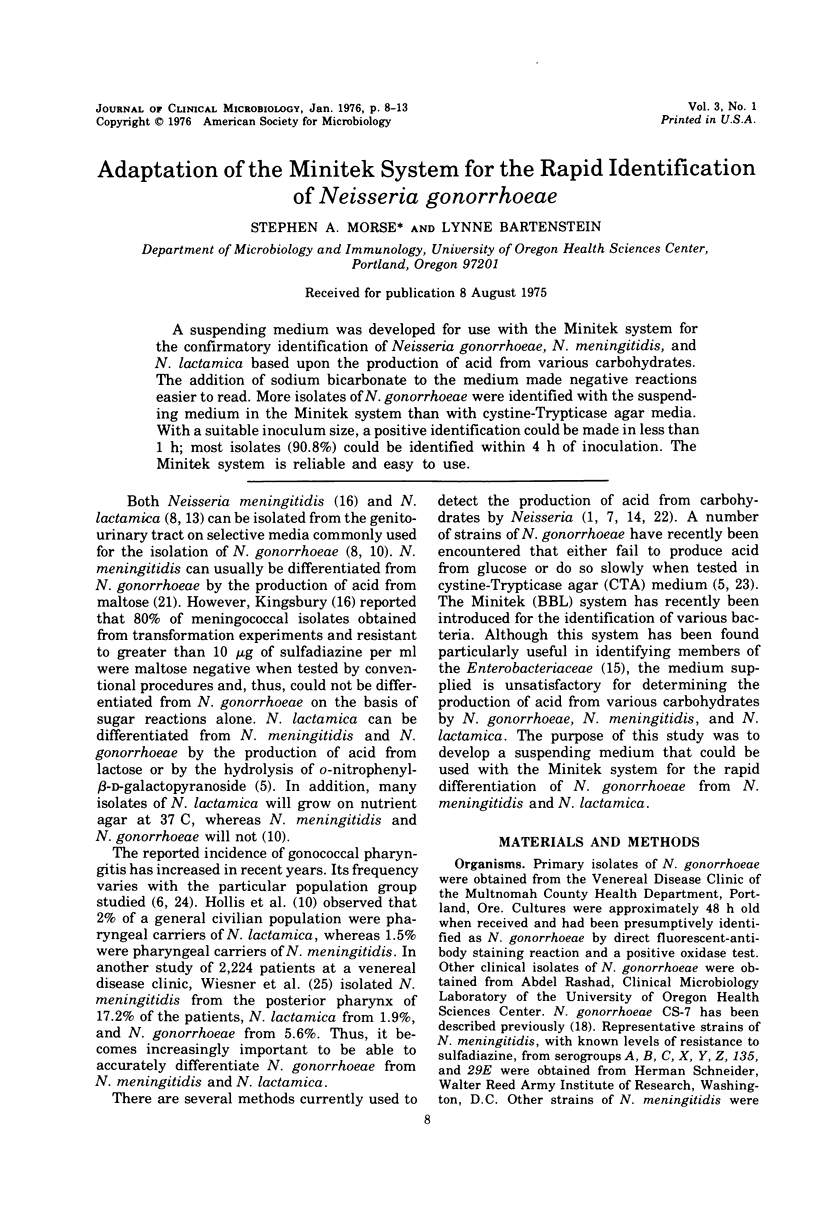
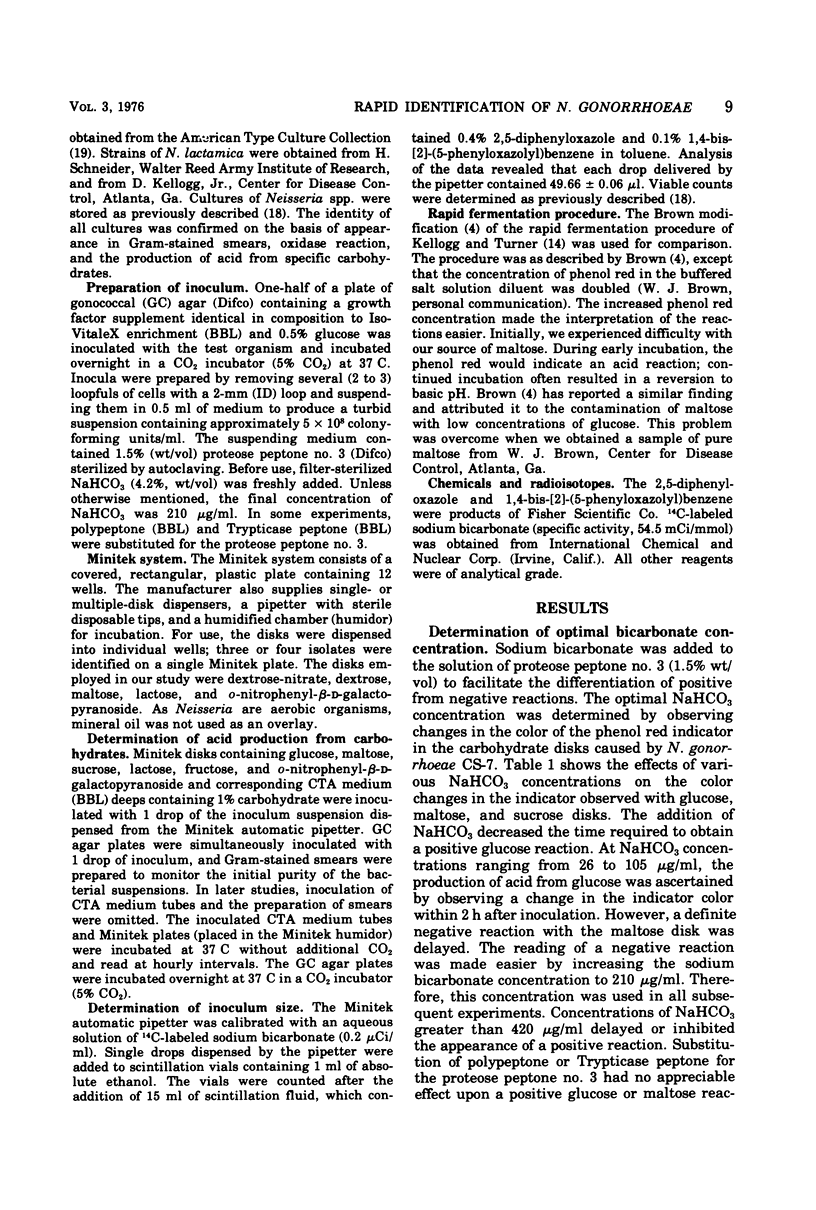
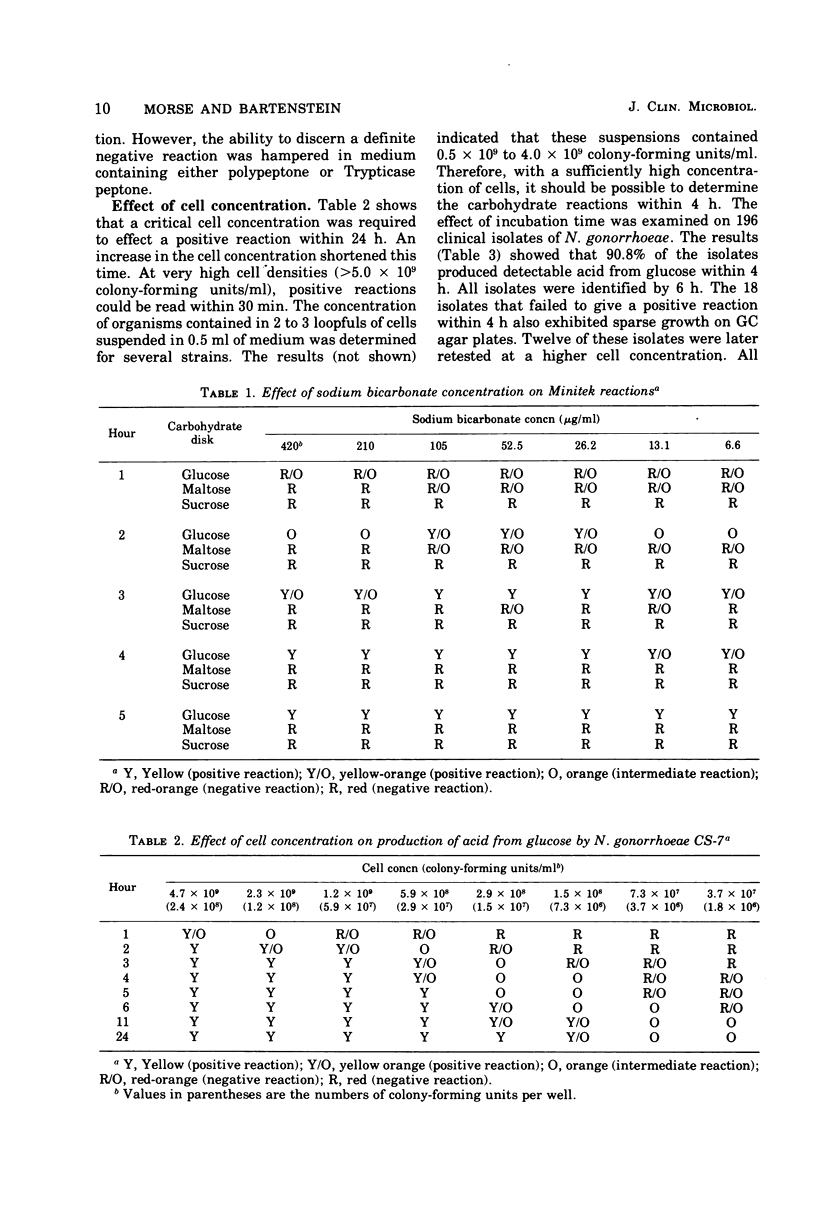
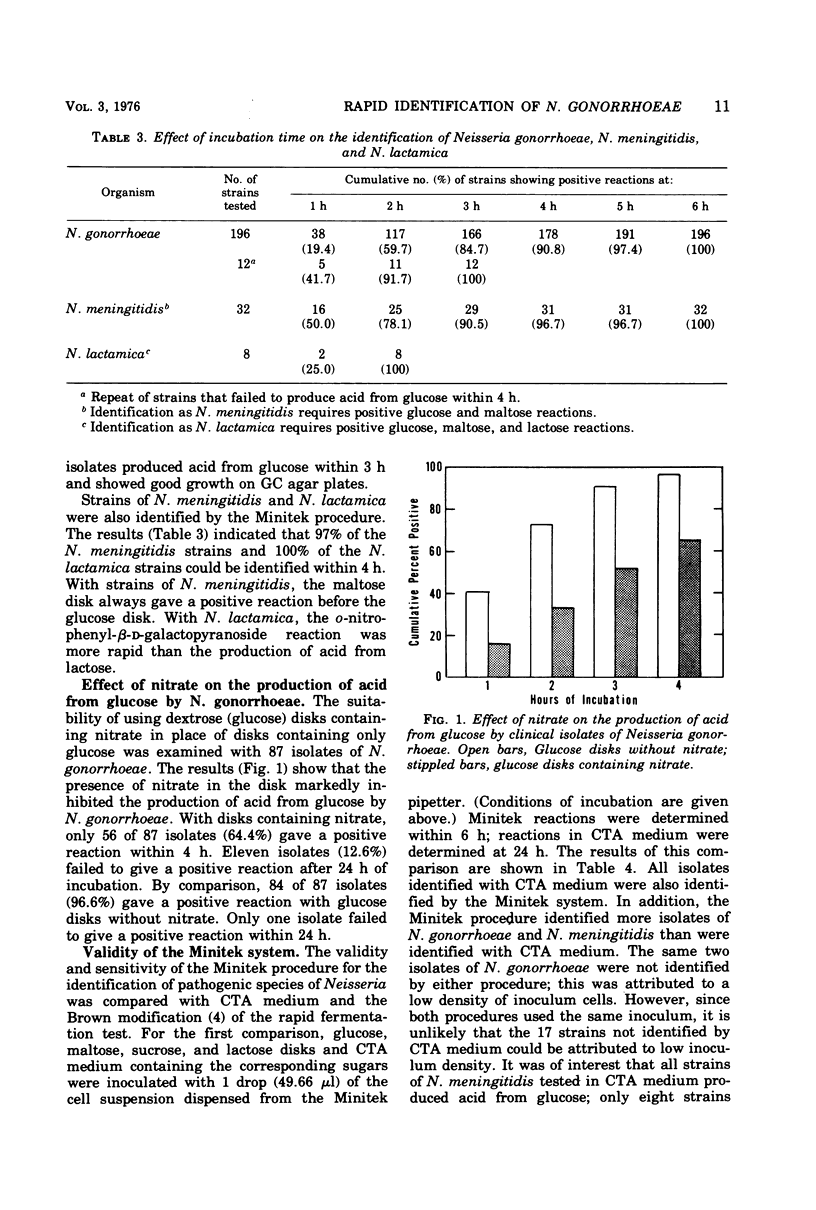
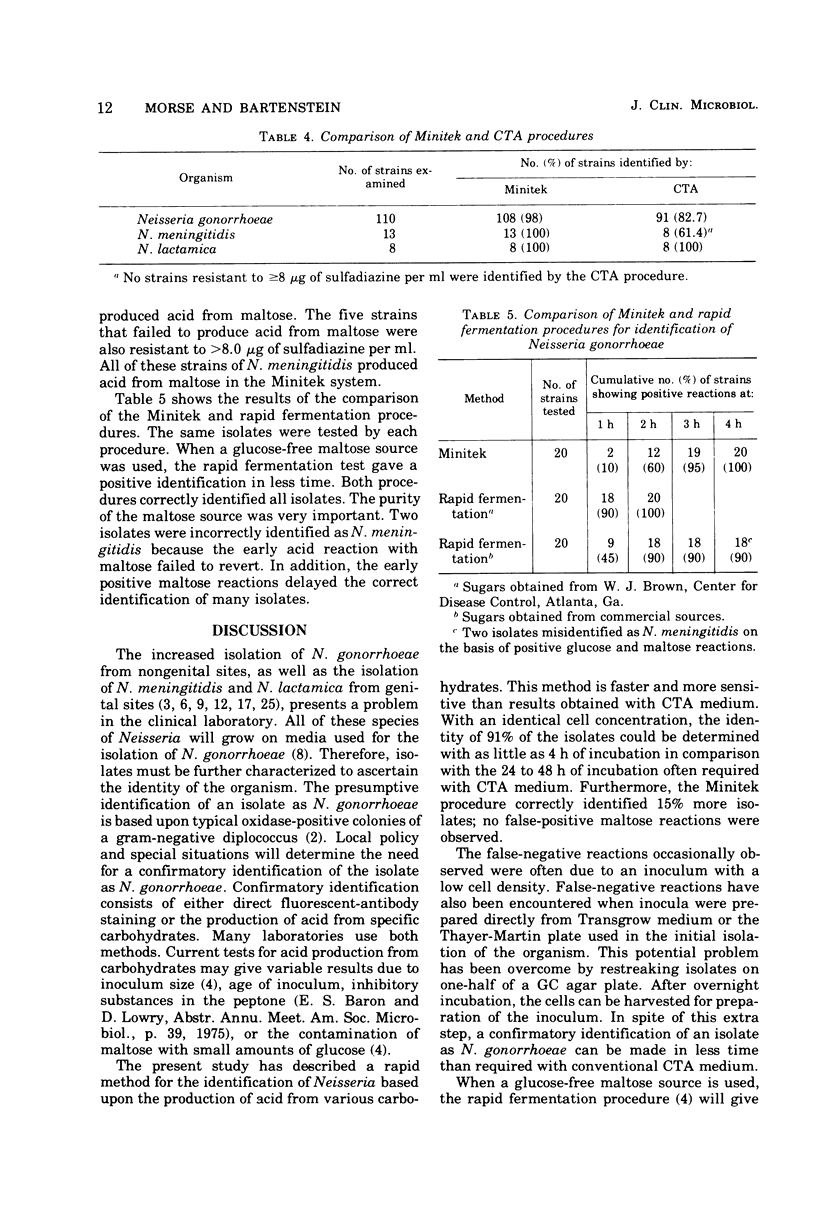
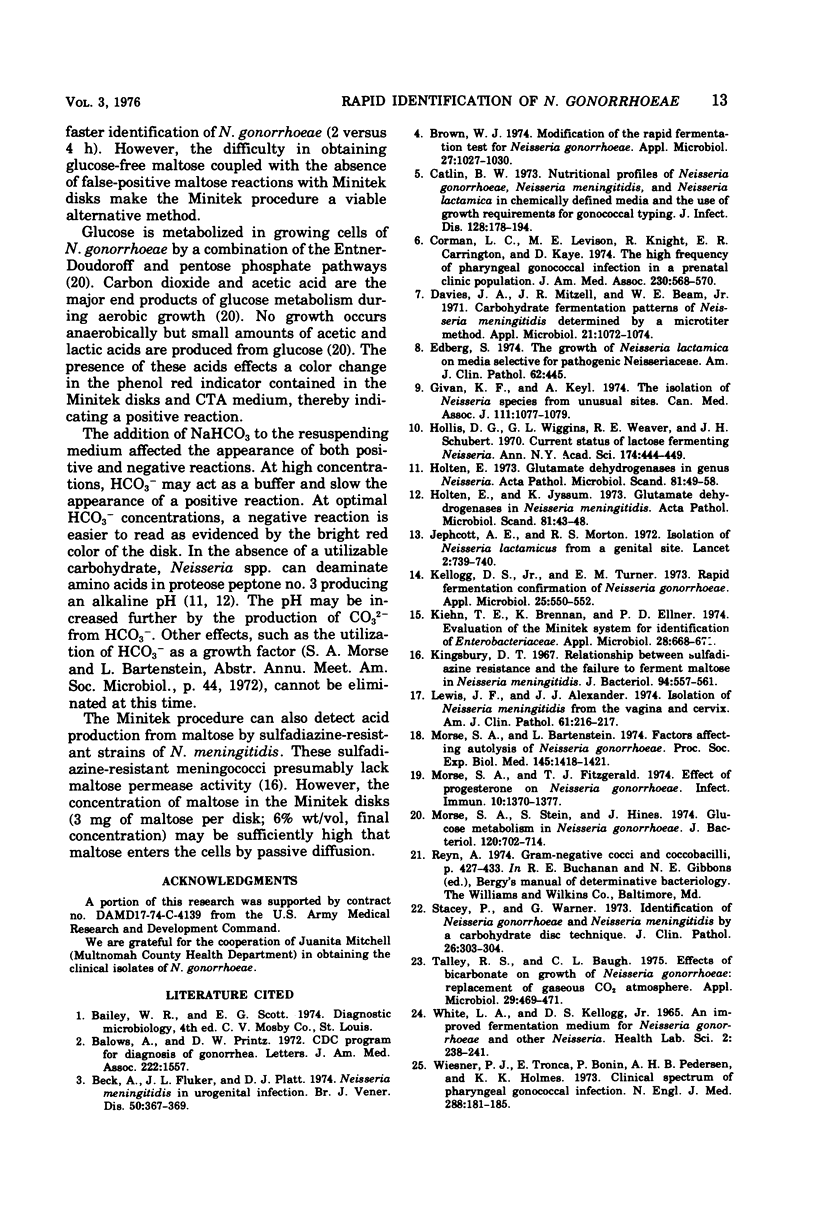
Selected References
These references are in PubMed. This may not be the complete list of references from this article.
- Balows A., Printz D. W. CDC program for diagnosis of gonorrhea. JAMA. 1972 Dec 18;222(12):1557–1557. [PubMed] [Google Scholar]
- Beck A., Fluker J. L., Platt D. J. Neisseria meningitidis in urogenital infection. Br J Vener Dis. 1974 Oct;50(5):367–369. doi: 10.1136/sti.50.5.367. [DOI] [PMC free article] [PubMed] [Google Scholar]
- Brown W. J. Modification of the rapid fermentation test for Neisseria gonorrhoeae. Appl Microbiol. 1974 Jun;27(6):1027–1030. doi: 10.1128/am.27.6.1027-1030.1974. [DOI] [PMC free article] [PubMed] [Google Scholar]
- Catlin B. W. Nutritional profiles of Neisseria gonorrhoeae, Neisseria meningitidis, and Neisseria lactamica in chemically defined media and the use of growth requirements for gonococcal typing. J Infect Dis. 1973 Aug;128(2):178–194. doi: 10.1093/infdis/128.2.178. [DOI] [PubMed] [Google Scholar]
- Corman L. C., Levison M. E., Knight R., Carrington E. R., Kaye D. The high frequency of pharyngeal gonococcal infection in a prenatal clinic population. JAMA. 1974 Oct 28;230(4):568–570. [PubMed] [Google Scholar]
- Davies J. A., Mitzel J. R., Beam W. E., Jr Carbohydrate fermentation patterns of Neisseria meningitidis determined by a microtiter method. Appl Microbiol. 1971 Jun;21(6):1072–1074. doi: 10.1128/am.21.6.1072-1074.1971. [DOI] [PMC free article] [PubMed] [Google Scholar]
- Edberg S. C. Letter: The growth of Neisseria lactamica on media selective for pathogenic Neissericaeae. Am J Clin Pathol. 1974 Sep;62(3):445–445. doi: 10.1093/ajcp/62.3.445. [DOI] [PubMed] [Google Scholar]
- Givan K. F., Keyl A. The isolation of Neisseria species from unusual sites. Can Med Assoc J. 1974 Nov 16;111(10):1077–1079. [PMC free article] [PubMed] [Google Scholar]
- Hollis D. G., Wiggins G. L., Weaver R. E., Schubert J. H. Current status of lactose-fermenting Neisseria. Ann N Y Acad Sci. 1970 Oct 30;174(2):444–449. doi: 10.1111/j.1749-6632.1970.tb45572.x. [DOI] [PubMed] [Google Scholar]
- Holten E. Glutamate dehydrogenases in genus Neisseria. Acta Pathol Microbiol Scand B Microbiol Immunol. 1973 Feb;81(1):49–58. doi: 10.1111/j.1699-0463.1973.tb02186.x. [DOI] [PubMed] [Google Scholar]
- Holten E., Jyssum K. Glutamate dehydrogenases in Neisseria meningitidis. Acta Pathol Microbiol Scand B Microbiol Immunol. 1973 Feb;81(1):43–48. doi: 10.1111/j.1699-0463.1973.tb02185.x. [DOI] [PubMed] [Google Scholar]
- Jephcott A. E., Morton R. S. Isolation of neisseria lactamicus from a genital site. Lancet. 1972 Oct 7;2(7780):739–740. doi: 10.1016/s0140-6736(72)92027-2. [DOI] [PubMed] [Google Scholar]
- Kellogg D. S., Jr, Turner E. M. Rapid fermentation confirmation of Neisseria gonorrhoeae. Appl Microbiol. 1973 Apr;25(4):550–552. doi: 10.1128/am.25.4.550-552.1973. [DOI] [PMC free article] [PubMed] [Google Scholar]
- Kiehn T. E., Brennan K., Ellner P. D. Evaluation of the Minitek system for identification of Enterobacteriaceae. Appl Microbiol. 1974 Oct;28(4):668–671. doi: 10.1128/am.28.4.668-671.1974. [DOI] [PMC free article] [PubMed] [Google Scholar]
- Kingsbury D. T. Relationship between sulfadiazine resistance and the failure to ferment maltose in Neisseria meningitidis. J Bacteriol. 1967 Sep;94(3):557–561. doi: 10.1128/jb.94.3.557-561.1967. [DOI] [PMC free article] [PubMed] [Google Scholar]
- Lewis J. F., Alexander J. J. Isolation of Neisseria meningitidis from the vagina and cervix. Am J Clin Pathol. 1974 Feb;61(2):216–217. doi: 10.1093/ajcp/61.2.216. [DOI] [PubMed] [Google Scholar]
- Morse S. A., Bartenstein L. Factors affecting autolysis of Neisseria gonorrhoeae. Proc Soc Exp Biol Med. 1974 Apr;145(4):1418–1421. doi: 10.3181/00379727-145-38025. [DOI] [PubMed] [Google Scholar]
- Morse S. A., Fitzgerald T. J. Effect of progesterone on Neisseria gonorrhoeae. Infect Immun. 1974 Dec;10(6):1370–1377. doi: 10.1128/iai.10.6.1370-1377.1974. [DOI] [PMC free article] [PubMed] [Google Scholar]
- Morse S. A., Stein S., Hines J. Glucose metabolism in Neisseria gonorrhoeae. J Bacteriol. 1974 Nov;120(2):702–714. doi: 10.1128/jb.120.2.702-714.1974. [DOI] [PMC free article] [PubMed] [Google Scholar]
- Stacey P., Warner G. Identification of Neisseria gonorrhoea and Neisseria meningitidis by a carbohydrate disc technique. J Clin Pathol. 1973 Apr;26(4):303–304. doi: 10.1136/jcp.26.4.303. [DOI] [PMC free article] [PubMed] [Google Scholar]
- Talley R. S., Baugh C. L. Effects of bicarbonate on growth of Neisseria gonorrhoeae: replacement of gaseous CO2 atmosphere. Appl Microbiol. 1975 Apr;29(4):469–471. doi: 10.1128/am.29.4.469-471.1975. [DOI] [PMC free article] [PubMed] [Google Scholar]
- White L. A., Kellogg D. S., Jr An improved fermentation medium for Neisseria gonorrhoeae and other Neisseria. Health Lab Sci. 1965 Oct;2(4):238–241. [PubMed] [Google Scholar]
- Wiesner P. J., Tronca E., Bonin P., Pedersen A. H., Holmes K. K. Clinical spectrum of pharyngeal gonococcal infection. N Engl J Med. 1973 Jan 25;288(4):181–185. doi: 10.1056/NEJM197301252880404. [DOI] [PubMed] [Google Scholar]


